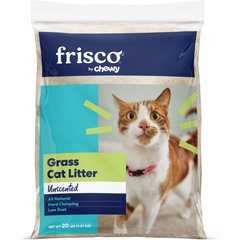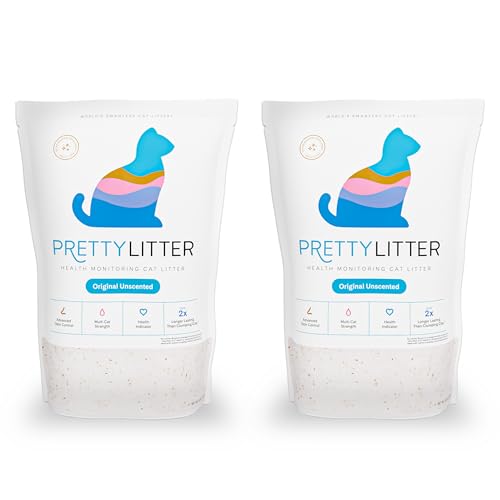




If you’ve recently adopted a furry friend who has undergone a claw removal procedure, selecting the right substrate for their bathroom needs is paramount. The right choice can prevent discomfort and ensure a positive experience for your pet. This article outlines the most suitable options available, focusing on their texture, absorbency, and safety.
This guide is tailored for pet owners who want to prioritize their companion’s comfort and well-being. It provides insights into various types of materials, highlighting those that are gentle on sensitive paws and minimize the risk of injury. You’ll discover practical recommendations that make the transition smoother for both you and your pet.
In summary, you’ll find a comparison of multiple substrate types, including clumping, non-clumping, and natural options. Each category is examined for its pros and cons, along with tips on how to gradually introduce your furry friend to a new medium. By the end, you’ll be equipped with the knowledge to make an informed decision that best suits your pet’s needs and preferences.
Choosing the Right Substrate for Your Feline Friend
The right substrate can greatly enhance the comfort and well-being of your feline companion. It’s essential to select a formula that is gentle on their paws, especially when they lack claws. Softness and absorbency are key attributes to consider.
Opting for a clumping variety can simplify cleanup, allowing you to remove waste easily. Additionally, a low-dust option helps reduce respiratory issues. Look for materials made from natural sources, such as corn or recycled paper, as these tend to be less abrasive.
Key Features to Consider
- Soft Texture: Ensure the material is gentle on sensitive paws.
- Low Dust: Reduces respiratory irritations and promotes a healthier environment.
- Natural Ingredients: Opt for products made from safe, biodegradable materials.
- Odor Control: Look for options that effectively neutralize smells without harsh chemicals.
Regular cleaning is vital, as it helps maintain hygiene. Changing the substrate frequently can prevent any discomfort and promote a pleasant experience for your pet.
By prioritizing these features, you can create a comfortable and safe bathroom space for your companion, ensuring their paws remain unharmed while they adapt to their environment.
Understanding the Unique Needs of Declawed Cats
Providing a safe and comfortable environment for felines without claws requires special attention to their physical and emotional needs. These animals often experience increased sensitivity in their paws, making the choice of substrate critical for their well-being.
Selecting a gentle and soft material can significantly enhance their comfort during litterbox use. Avoiding rough textures that may irritate their paws is essential. Consider options that are less abrasive, as this can help prevent discomfort and encourage regular use.
Key Factors to Consider
When addressing the needs of these pets, several factors should be prioritized:
- Softness: A softer texture can reduce irritation and promote a more pleasant experience during elimination.
- Absorbency: Highly absorbent materials can help keep the area clean and dry, which is important for health.
- Odor Control: Effective odor management is necessary to maintain a clean environment, encouraging consistent use of the designated area.
- Low Dust: Minimizing dust is beneficial to respiratory health, particularly for those who may have sensitivities.
Incorporating these aspects into the care routine can create a supportive atmosphere that acknowledges the specific challenges faced by felines who have undergone this procedure. By prioritizing their comfort, guardians can foster a healthier and more positive living situation.
Materials for Gentle and Absorbent Options
Choosing the right substrate is key for comfort and hygiene. Natural materials like corn and wheat provide gentle textures that are less abrasive on sensitive paws, especially for those without claws.
Another excellent choice is paper-based options. These are often made from recycled materials, offering both absorbency and a soft touch. They help control odors effectively while being environmentally friendly.
Key Attributes of Recommended Materials
- Softness: Look for substrates that minimize discomfort, especially for sensitive paws.
- Absorbency: Materials that can absorb moisture quickly help maintain a dry environment.
- Odor Control: Effective odor management keeps the living space fresh.
- Dust-Free: Low-dust options reduce respiratory issues and keep the air clean.
When selecting a suitable medium, consider these features to ensure a pleasant experience. Each material type has its unique benefits, allowing for personalization based on individual needs.
Evaluating Dust Levels and Allergies in Cat Litter Choices
When selecting a substrate for a feline companion, evaluating the dust levels is paramount, especially for those without claws. Low-dust options help reduce respiratory irritation and allergies in both the pet and its human family members. Many alternatives exist, but it’s crucial to consider their impact on health.
Materials like clay often produce significant dust during handling and use. In contrast, plant-based options typically generate less airborne particles. Opting for a low-dust formulation can lead to improved air quality in the home, benefiting everyone present.
Understanding Allergies
Allergies can manifest in various forms, including sneezing, coughing, or skin irritations. The choice of substrate can significantly influence these reactions. Many individuals may be sensitive to the fragrances or additives present in some products.
- Choose unscented varieties to minimize allergic responses.
- Consider biodegradable materials that are less likely to contain harmful additives.
- Monitor your pet’s behavior and health after introducing a new option to identify any adverse effects.
Regular cleaning and maintenance of the chosen substrate also play a role in minimizing allergens. Keeping the area clean reduces the buildup of dust and other irritants.
In summary, evaluating dust levels and potential allergens in substrates is crucial for maintaining a healthy environment for both pets and their owners. Prioritizing low-dust, unscented options can significantly enhance quality of life.
Budget-Friendly Options Without Compromising Quality
Consider using clay-based materials such as clumping clay or natural clay to provide a cost-effective solution without sacrificing performance. These options manage moisture well and help control odors effectively.
Another economical choice is recycled paper products. They are gentle on sensitive paws and offer excellent absorbency while being environmentally friendly.
- Clumping Clay: Affordable and widely available, it forms solid clumps that make cleaning easy.
- Natural Clay: Non-toxic and biodegradable, this type provides good odor control and is gentle on paws.
- Recycled Paper: Soft and safe, this option is ideal for sensitive animals and is often cheaper than traditional alternatives.
- Pine Pellets: Made from compressed sawdust, they are cost-effective and have a pleasant natural scent.
To ensure you choose the right product, consider the following:
- Check for dust-free options to protect respiratory health.
- Look for biodegradable materials to reduce environmental impact.
- Read reviews to find products that balance cost and quality.
In conclusion, selecting affordable alternatives can maintain comfort and hygiene for your feline companion. Researching available options will help find the right balance between price and functionality.
Best cat litter for declawed cats
Features
| Part Number | PL6-2 |
| Model | pl6Lotus-2 |
| Color | White |
| Size | 6 LB (Pack of 2) |
Features
| Part Number | 10194 |
| Model | WB10194 |
| Color | Red |
| Release Date | 2020-09-01T00:00:01Z |
| Size | 32-Pound |
Features
| Part Number | 3-06-33843-85050-4 |
| Model | 3-06-33843-85050-4 |
| Warranty | Satisfaction Guranteed |
| Color | Micro Crystals |
| Release Date | 2024-07-24T00:00:01Z |
| Size | 15 Pounds |
Features
| Part Number | 10195 |
| Model | WB10195 |
| Color | Purple |
| Release Date | 2020-09-01T00:00:01Z |
| Size | 32-Pound |
Features
| Size | 3.5 LB (Pack of 4) |
Video:
FAQ:
What type of cat litter is best for declawed cats?
Declawed cats may benefit from softer, more gentle types of litter. Alternatives like crystal or paper-based litters can be less abrasive on their paws. These litters are designed to minimize discomfort and are generally more forgiving for sensitive feet. It’s also important to avoid clay litters with sharp granules that might irritate their paws further. Choosing a low-dust option can help reduce respiratory irritation as well.
How can I help my declawed cat adjust to a new litter type?
Transitioning a declawed cat to a new type of litter should be done gradually. Start by mixing the new litter with the old one in a 75-25 ratio, allowing your cat to get used to the new texture and scent. Monitor your cat’s behavior closely during this period. If your cat shows signs of discomfort or refuses to use the litter box, consider adjusting the ratio or reverting to the previous litter. Providing a variety of litter types in different boxes can also help your cat find what they prefer.










